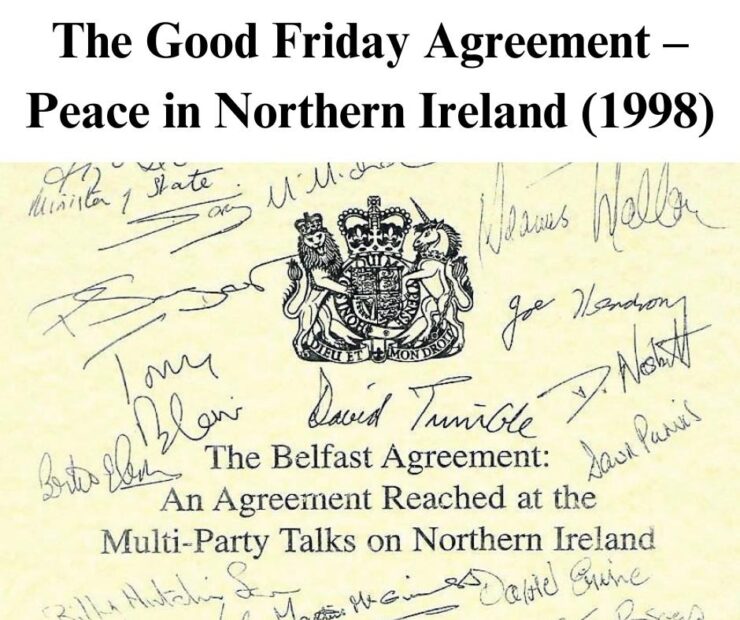
The Good Friday Agreement – Peace in Northern Ireland (1998)
After decades of violence, grief, and division, the people of Northern Ireland finally had hope.
On April 10, 1998 — Good Friday — an historic peace deal was signed, bringing an end to The Troubles and setting the path toward reconciliation.
This was the Good Friday Agreement — a triumph of diplomacy, courage, and compromise.
What Were The Troubles?
•A 30-year conflict marked by sectarian violence, involving nationalists (mostly Catholic) who wanted to join Ireland, and unionists (mostly Protestant) who wanted to remain in the UK.
•Over 3,500 people were killed, with thousands more injured.
•Paramilitary groups, British forces, and civilians were all caught in the conflict.
What Did the Agreement Do?
•Created a power-sharing government in Northern Ireland.
•Confirmed that Northern Ireland remains part of the UK — unless the majority vote otherwise in the future.
•Allowed citizens to identify as British, Irish, or both.
•Devolved powers to a Northern Ireland Assembly and Executive.
•Established cooperation between Northern Ireland and the Republic of Ireland.
•Began the process of demilitarization and prisoner release.
Who Was Involved?
•British Prime Minister Tony Blair, Irish Taoiseach Bertie Ahern, and US Senator George Mitchell helped broker the deal.
•Signed by most major parties in Northern Ireland, including Sinn Féin and the Ulster Unionist Party.
•Backed by public votes in referendums held in both Northern Ireland and the Republic of Ireland.
Legacy:
•Though challenges remain, the agreement dramatically reduced violence and built a path for dialogue over division.
•It stands as one of the most significant peace achievements in modern European history.
The Good Friday Agreement proved that peace is possible —
even in the face of deep history, hurt, and hatred.
